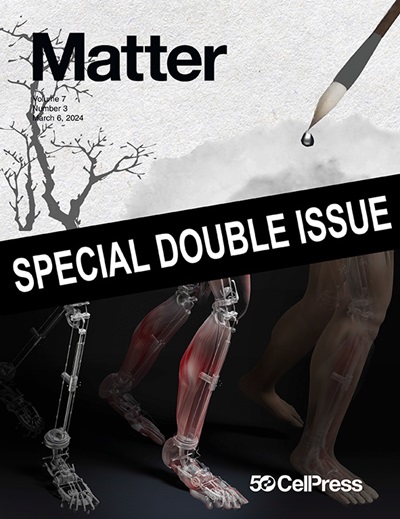以台湾枫香果为灵感的层级奈米捕集器架构,以有效提取海水中的铀
IF 17.5
1区 材料科学
Q1 MATERIALS SCIENCE, MULTIDISCIPLINARY
引用次数: 0
摘要
从海水中高效提取铀对于维持核能至关重要,但这一过程需要在复杂环境中具有高选择性的吸附剂。纳米陷阱材料对铀离子表现出优异的选择性;然而,它们的能力往往受到大量传质阻力的限制,这阻碍了离子向活性结合位点的扩散。摘要本研究以台湾枫香果实的分层多孔结构为灵感,利用软体模板方法构建了具有仿生分层多孔结构的mof纳米捕集剂。MOF框架内大孔的整合增强了铀酰离子的运输,最大化了功能结合位点的可达性,从而显著提高了吸附效率。实验结果表明,在水溶液中的吸附量提高213%,在天然海水中的吸附量提高150%。本研究提出了一种解决功能化mof传质限制的策略,为开发高选择性海水提铀吸附剂提供了一条有前途的途径。本文章由计算机程序翻译,如有差异,请以英文原文为准。

Liquidambar formosana fruit-inspired hierarchical nano-trap framework for efficient uranium extraction from seawater
Efficient uranium extraction from seawater is essential for sustaining nuclear energy, yet this process requires adsorbents with high selectivity in complex environments. Nano-trap materials exhibit superior selectivity for uranium ions; however, their capacity is often limited by substantial mass transfer resistance, which impedes the diffusion of ions to active binding sites. Inspired by the hierarchical porous structure of Liquidambar formosana fruit, known for promoting rapid mass transfer, this study constructs MOF-based nano-trap adsorbents with biomimetic hierarchical porosity using a soft-template approach. The integration of macropores within the MOF framework enhances uranyl ion transport and maximizes the accessibility of functional binding sites, thereby significantly improving adsorption efficiency. Experimental results demonstrate a 213% increase in adsorption capacity in aqueous solutions and a 150% improvement in natural seawater. This work presents a strategy to address mass transfer limitations in functionalized MOFs, offering a promising approach for developing high-selectivity adsorbents for seawater uranium extraction.
求助全文
通过发布文献求助,成功后即可免费获取论文全文。
去求助
来源期刊

Matter
MATERIALS SCIENCE, MULTIDISCIPLINARY-
CiteScore
26.30
自引率
2.60%
发文量
367
期刊介绍:
Matter, a monthly journal affiliated with Cell, spans the broad field of materials science from nano to macro levels,covering fundamentals to applications. Embracing groundbreaking technologies,it includes full-length research articles,reviews, perspectives,previews, opinions, personnel stories, and general editorial content.
Matter aims to be the primary resource for researchers in academia and industry, inspiring the next generation of materials scientists.
 求助内容:
求助内容: 应助结果提醒方式:
应助结果提醒方式:


